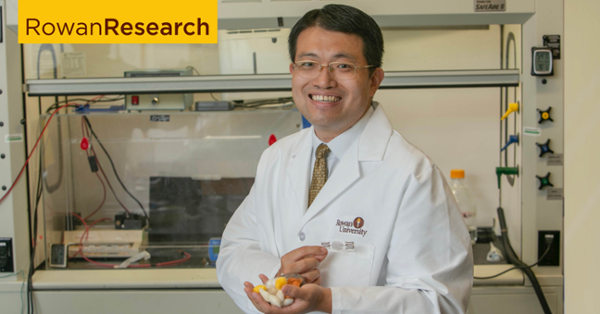Manipulating the properties of natural materials
Manipulating the properties of natural materials

Electrically conductive nanofibers and foams, biomedical sensors with heat-transferring properties and biocompatible solutions with magnetic properties are just a few of the innovations made possible through research in natural fibers. Xiao Hu, Ph.D., professor in the Department of Physics & Astronomy, studies many types of natural biopolymers in his laboratory at the Rowan University College of Science & Mathematics. His past and current subjects of study include proteins from silk, celluloses from wood, zeins from corn, chitins from shrimp and keratins found in hair.
Xiao Hu, Ph.D.
Materials scientist
Areas of expertise: Materials science and engineering, biophysics, biomedical science and engineeringMore information
Hu begins with natural fibers, which he purifies and dissolves into a solution. Using different types of engineering technologies, he can make a variety of functional materials out of these solutions. The biocomposites that Hu creates out of natural biopolymers are new materials with tunable functions and properties.
“The reason we study natural biopolymers is because we’re focusing on green, sustainable materials that can biodegrade after use with no harmful effects on the environment,” said Hu.
Hu conducts both basic and applied research, working on projects funded by grants from the National Science Foundation, the New Jersey Health Foundation and the National Institute of Standards and Technology.
“It’s not like any material can do anything you want, because different materials have different physical and chemical properties,” Hu said. “In the basic science research in my lab, we go deep to understand how the crystal structure of the material gives it certain properties and how we can manipulate the structure to change those properties.”
Hu’s work in manipulating the structure and properties of natural materials has direct applications in areas like biomedical science and the development of biodegradable building materials. Over the course of his career, he has achieved more than 135 publications and 9,700 citations.
Rowan University researchers are passionate about what they do. Find more at Meet Our Researchers.